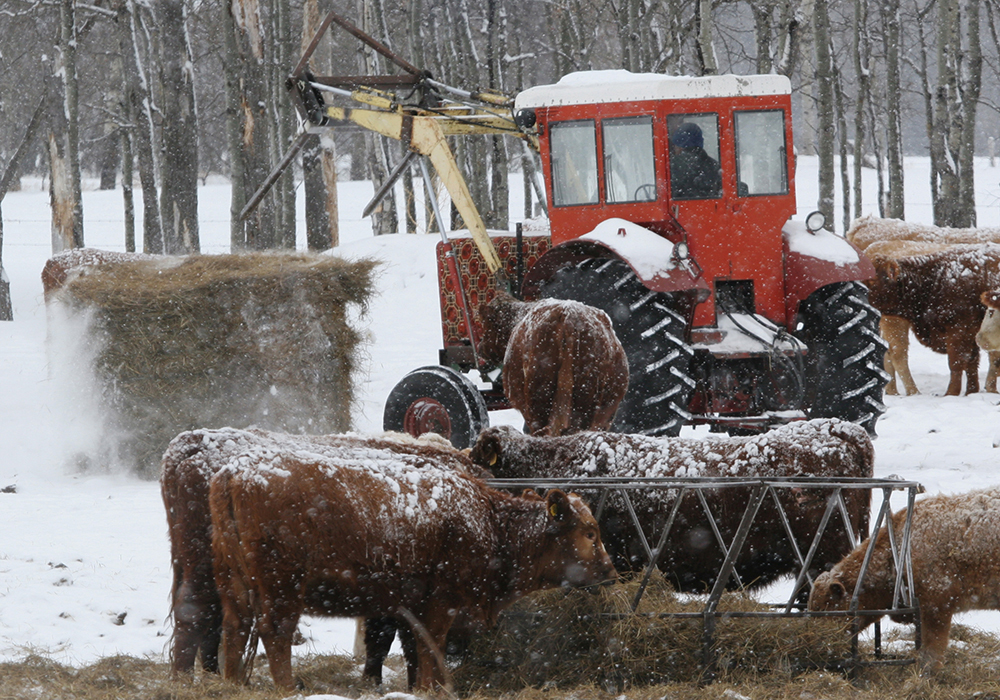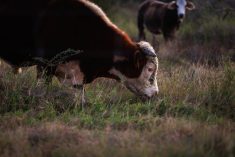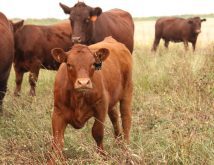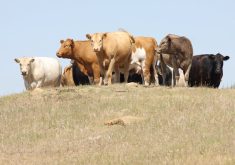REGINA — Several years of drought may have taken a toll on feed supply and quality in some areas.
Feed testing is critical to make sure cows receive adequate nutrition leading up to and after calving.
University of Saskatchewan beef and forage researcher Dr. Bart Lardner said pregnant cows should be at a body condition score of three or higher before calving.
“I always want to make sure that nutrient density of that diet is there coming into that last 30 days before calving, ramping up the energy and protein for what her requirements are,” he said.
Read Also

Canadian Food Inspection Agency slammed for handling of bovine tuberculosis case
The federal government leans heavily on producers to “take one for the team” and risk their livelihoods without any reassurance of support.
In late gestation, the cow requires nine to 10 per cent protein in the diet and about 58 to 60 percent total digestible nutrients, or TDN.
“Once she calves and is starting to lactate, her protein bumps up to 11, 12 per cent and her energy bumps to 63 to 65 percent. Is the diet ingredients supplying that? It’s so key to have feed test results to make sure that is happening.”
Lardner said producers should provide extra supplementation through two to five pounds of pellets each day.
“Why? Because also coming into calving there’s the displacement of that unborn calf and so she has a small rumen capacity, and that’s why you need to increase that nutrient density.”
A good trace mineral program is important all the time.
“It’s just paramount with these drought conditions that we provide an adequate micronutrient supplement year-round,” he said. “A lot of folks are trying to cut costs and maybe not providing it 12 months.”
The mineral program should contain a good balance of macros such as calcium and phosphorous and micros such as copper, zinc and manganese. Lardner said bioavailability of minerals differs. The least available and used by the animal are oxides and sulfates. They are also cheaper.
“Then you get into the carbonates, the hydroxies and then of course the chelated minerals,” he said. “Those are more expensive but they have increased bioavailability where you can rest assured that, yes, she’s getting those 33 milligrams of copper per kilo of diet and it’s going to be available and not passing out. That’s assuming your average intake of three to four ounces per head per day.”
Cows should get higher quality hay in the last trimester, or an annual greenfeed.
Lardner said commercial beef cows don’t need straight alfalfa hay.
“As long as it’s higher quality, a grass legume mix or a barley greenfeed, you want to save those for pre and post-calving.”
Maintaining body condition is key to reproductive success.
“Thin cows don’t rebreed,” Lardner said.
Open rates were high last fall, with some reports as high as 20 to 30 percent.
“I think it’s just a culmination of four years of drought, where we have cows that are in drought, that are conceiving during drought, the calves are born during drought and they’re trying to reach puberty during drought. Everything is just delayed.”
















